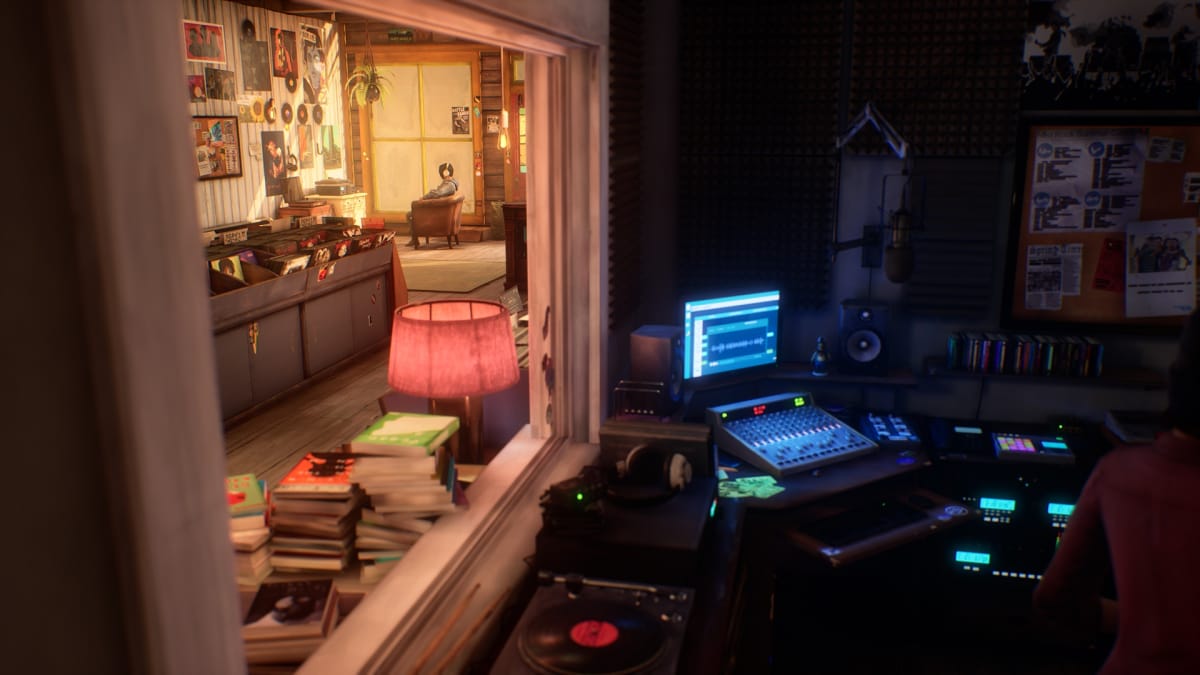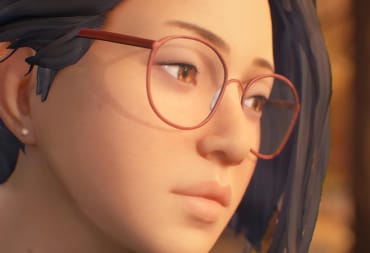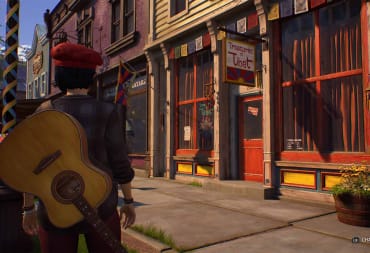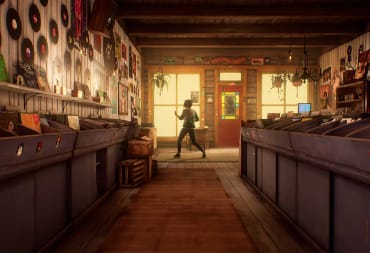Life is Strange: True Colors has garnered a healthy reception in the weeks since launch and it's easy to see why. We loved it. It's a gut-wrenching story about loss, but there's an interesting discussion surrounding Deck Nine's newest entry that's worth delving into. As a cross-generation narrative adventure game, it should have been a safe bet for impeccable image quality and performance on next-gen consoles and high-end PCs. Not quite hitting the mark, Life is Strange: True Colors' next-gen iteration is a perfectly playable experience; albeit one marred with inconspicuous inconsistencies.
The Life is Strange: True Colors Cinematic Experience
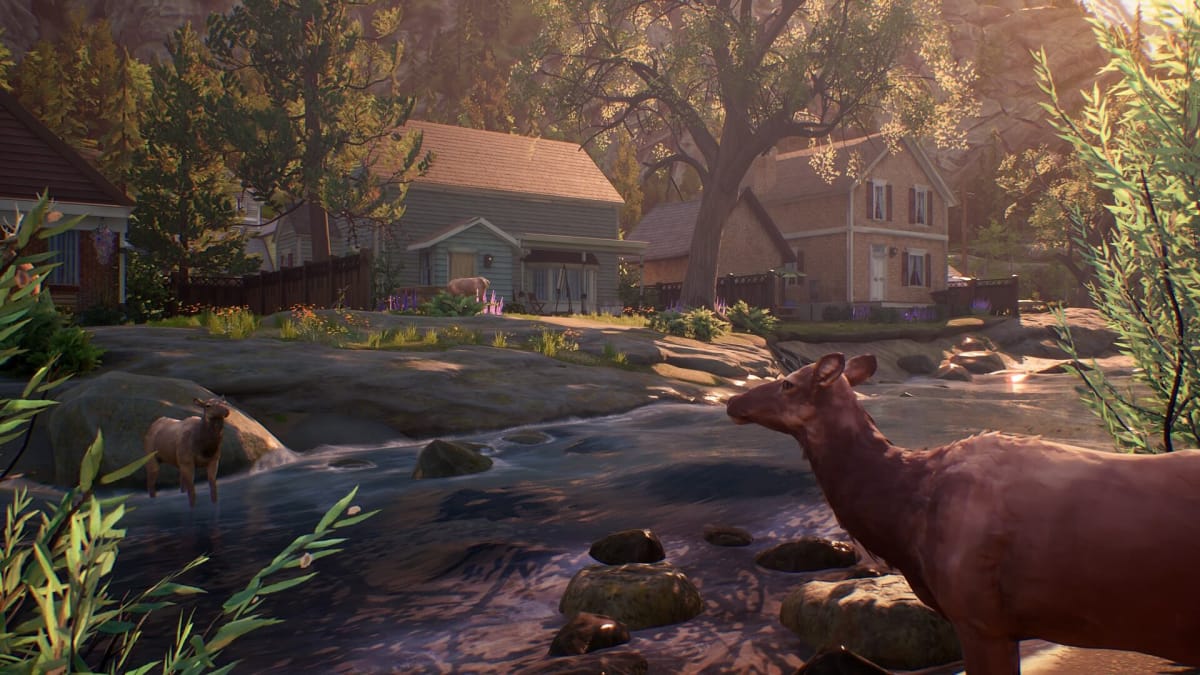
Deck Nine revealed that True Colors was capped at 30 frames per second on consoles to ensure the highest fidelity possible on every platform. Given the nature of its gameplay, rendering better visuals at a lower frame rate is a more sensible allocation of resources than lower fidelity at a higher refresh.
Because Life is Strange: True Colors' narrative is driven by Alex Chen's ability to empathize with people, getting that breadth of emotion across was paramount to the adventure. It required more than rock-solid acting. Animations and character models need equal attention to provide the kind of experience it was aiming for. In that regard, it's a success, providing major leaps in character rendering and animation over previous Life is Strange entries.
With that said, the visuals aren't so extravagant that this 30 fps cap makes sense. The fact that Gears 5 managed 60 frames per second on the last-gen Xbox One X in its campaign featuring much larger environments with more moving parts, such as more complex AI calculations, on a mobile CPU is far more impressive than what these next-gen consoles are doing here; especially so when the stuttering and sub-30 fps drops are factored in. Before getting too deep into the visuals and performance, let's quickly run over loading times. While loading is variable depending on the scene, the average loading screen lasts 15-17 seconds on an Xbox Series X after running multiple tests on our end. The region of 12-13 seconds was on the low-end of our findings. Looking at online playthroughs, the PlayStation 5 situation is better, with its average matching the Series X's low-end. Even then, these are much longer than expected from a next-gen optimized title. PS5 and Series X users are accustomed to single-digit loading times across a range of titles pushing more advanced visuals, effects, and more complex game design. It's puzzling for either system to take more than nine seconds loading into a small building with two rooms and in some cases, only one NPC.
The biggest headscratcher on the console side, though, comes from its ray-tracing toggle and general frame-rate targets. The PS5, Series S, and Series X have an option to enable or disable ray-tracing with the 30 fps cap employed either way. Life is Strange: True Colors takes place in a town comprised of one block with loading screens between each building and even different floors of buildings. It's a self-contained game with little going on, so the lack of an uncapped frame rate with ray-tracing turned off is befuddling.
This discrepancy gets more interesting when you compare the actual visual gain between the settings. As far as we could tell, ray-tracing only applies in very select instances, those being within cutscenes and only on shadows cast by or onto character models within those cinematics. Ray-tracing did not appear to have any impact on normal gameplay no matter how many different scenes were tested. The effect itself is in the running for the subtlest ray-tracing implementation on consoles. Play a game of spot the difference below. Keep in mind, this is from after the patch that fixed issues with ray-tracing rolled out.

For higher-resolution images, click here. It's a refinement, but it's so subtle and used in such select instances that it can't be using up too much of the consoles' resources. When developers like Insomniac and 4A Games are able to provide 60 fps experiences with solid image quality while utilizing much more robust and intensive ray-tracing implementations, the 30 fps cap starts to look more and more odd by comparison.
We can corroborate our educated guess about ray-tracing's minimal performance impact when looking at the PC version as tested by DSO Gaming. Another interesting find by them involves its CPU scaling and the intensity of its higher graphical presets. Running an RTX 3080 at 720p on cinematic settings on a simulated dual-core processor with two threads yielded an average of 110 frames per second. It's a multi-threaded game too, with higher core counts providing expected increases to the frame rate. Based on this, we can rule out the consoles' capable Ryzen Zen 2 CPU's as bottlenecks, which leaves us with a potential GPU constraint.
The PC version offers a "cinematic" preset that goes above "very high." At next to no appreciable visual gain, this extra preset sapped 38% performance out of the RTX 3080. Enabling ray-tracing had less of a performance impact than cinematic settings did, which is pretty unusual. This leads us to believe next-gen consoles are potentially using the unreasonably power-hungry cinematic preset, which combined with even the subtle ray-tracing implementation or without it at 4K, forced the 30 fps target that isn't even 100% locked. A future patch aims to fix these drops under 30, but that lends credence to our theory concerning why it runs as it does.
The Issue of Logistics
With everything we know, what might explain Life is Strange: True Colors' unusual performance quirks? The studio's roots date back to the original PlayStation. when it was founded as Idol Minds in 1997. In the years since, they've worked on games like Coolboarders, PAIN, and Neopets: The Darkest Faerie. Rebranding in 2017, the team took on the Deck Nine moniker as an homage to an old narrative adventure game: Planetfall.
This rebranding served as the impetus for leaving their old projects behind in favor of crafting narrative-driven experiences the likes of which inspired their new name. Life is Strange: Before the Storm was the first title under this new direction. Having largely stuck to smaller scale projects, Life is Strange: True Colors is the most expansive game the company has ever worked on. With such a marketing push and so many hardware platforms to optimize for, Deck Nine might have been better served with more time or a more focused launch.
Having to optimize for seven consoles in addition to PC isn't a small feat for anyone but the AAA juggernauts. It's likely Deck Nine is talented enough to have eked out more performance out of every platform had they fewer to manage. After all, the Life is Strange Remastered collection, originally meant to launch late September, was delayed to early next year. Also in development by Deck Nine, signs point to the potential that Square Enix may have handed them a plate that was a little too full.
Have a tip, or want to point out something we missed? Leave a Comment or e-mail us at tips@techraptor.net
